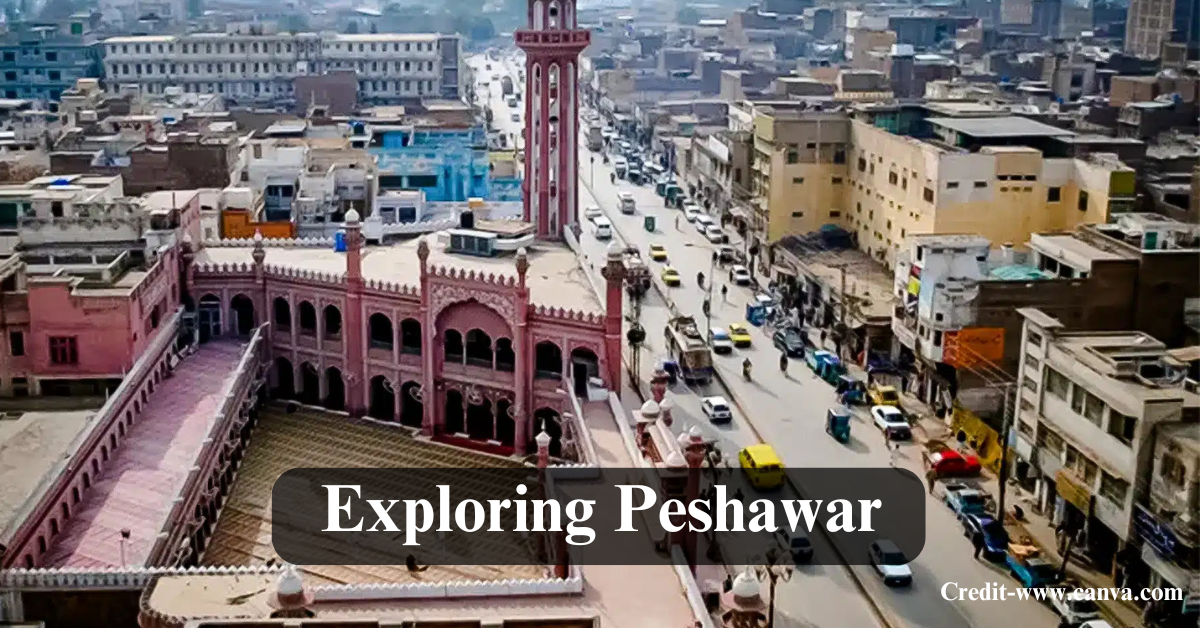Peshawar is more than a spot on a map. It is a city that lives, breathes and talks without pause. When you walk its lanes, your feet step on stones that remember centuries – yet you also pass cars, phones and shops that belong to now. Old walls still stand, bazaars roar with trade, smoke from grilled meat drifts past your face plus men sit in tea houses that stay open late. People meet you with simple goodwill and study you with frank interest. The pages ahead speak of the city’s history, its habits, its meals plus its daily rhythm, all in everyday speech so you sense the place as it stands now.
Table of Contents
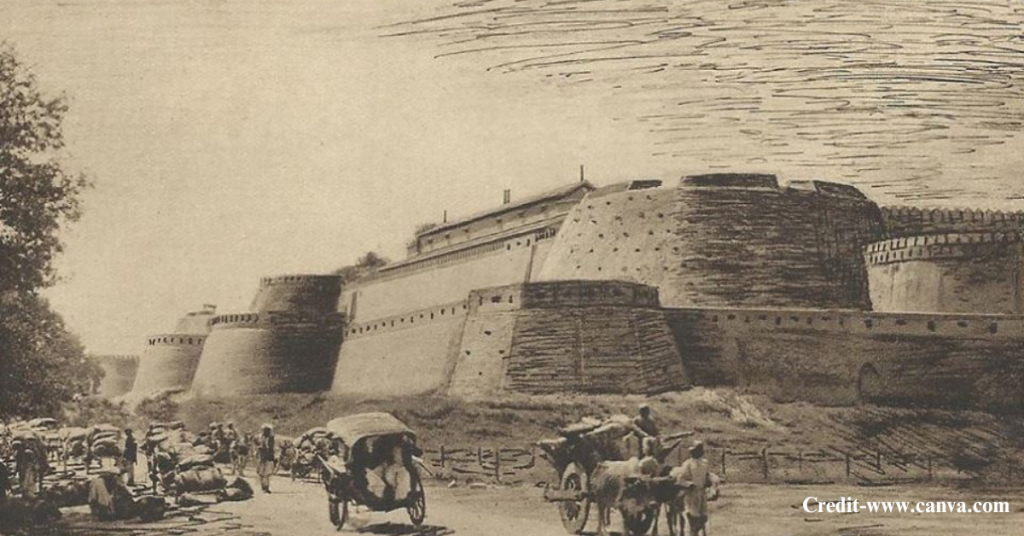
Where Peshawar Is & Why It Matters
Peshawar rests in northwest Pakistan, close to the Afghan line. For many centuries, traders, wanderers and kings passed through because the city sits beside the Khyber Pass, the chief road for soldiers, goods but also fresh thought. Mughals and later Britons both ruled the land in turn as well as each group left traces of its taste in the walls, the pictures and the dishes folk still serve.
The oldest part of Peshawar is called the Walled City or Andar Shehr. The lanes are narrow and wind between old brick houses, small mosques as well as packed bazaars. Outside the walls, areas such as Hayatabad show a newer face – straight roads, green parks and shops with glass fronts. When you step through the gates of the Walled City, the past surrounds you – when you walk back out, you see a city that keeps adding for the future.
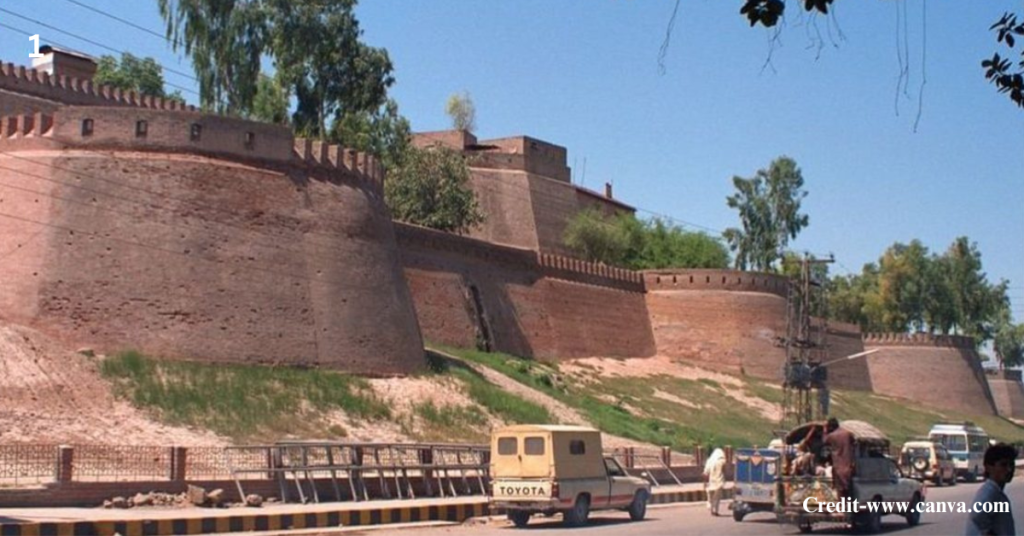
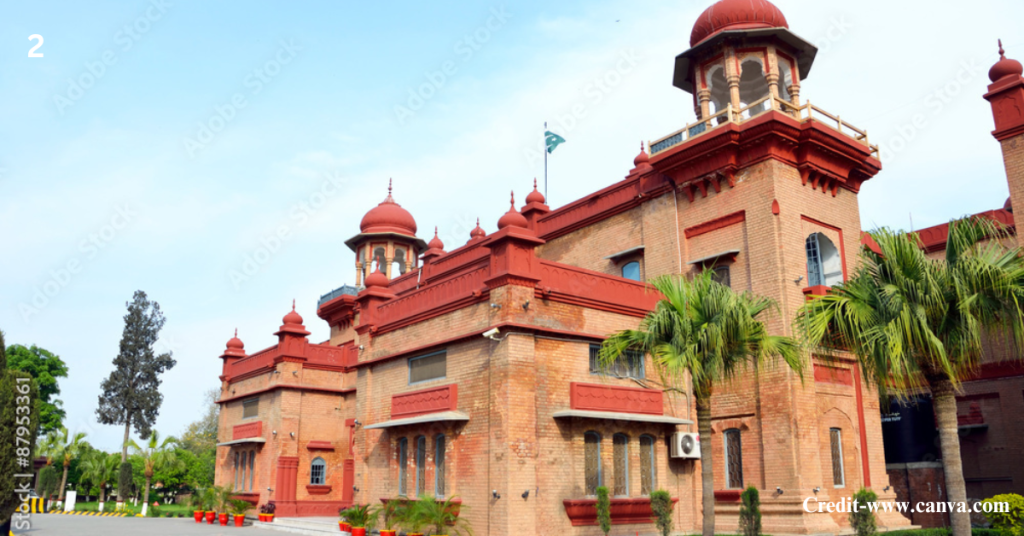
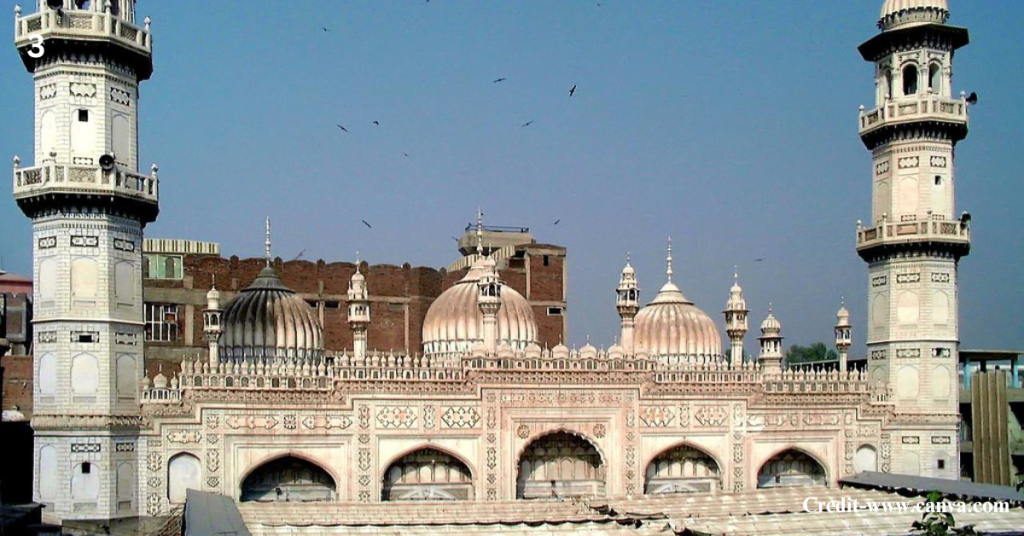
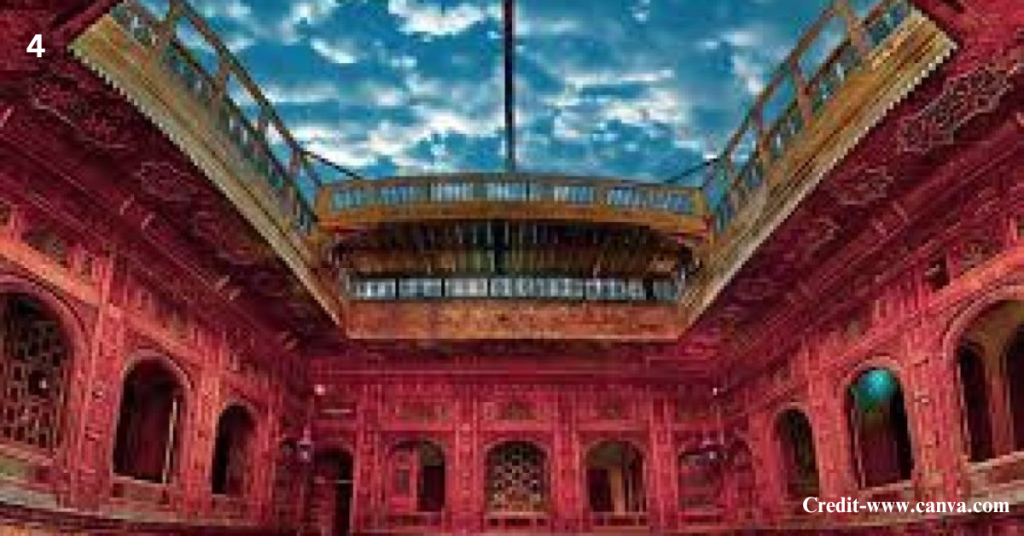
Historic & Cultural Places You Can’t Miss
Bala Hisar Fort
The fort sits on a high ridge above Peshawar. From its walls, you look down on streets and roofs that stretch to the horizon. Long ago, Durrani troops stood guard here – later, British soldiers did the same. Stone still shows scars from old fights plus wind carries a faint memory of their boots.
Peshawaw Museum
The building holds Gandhara stone pieces – statues, coins, rings and bracelets. Greek folds in robes sit next to Buddhist lotus designs. Each item rests in a glass case but also the room stays so quiet that you hear your own steps. Under the lights, the carved faces look as if the chisel just left the stone.
Mahabat Khan Mosque
White marble walls and tall minarets rise from the old city centre. At noon, sun strikes the carved flowers as well as vines and the stone shines like polished bone. Traffic noise stays outside the gate – inside, only pigeons flap or water trickles in the fountain.
Gor Khatri and Sethi Houses
Gor Khatri is a place where people lived more than two thousand years ago – their traces remain in the ground. A short walk away, the Sethi Houses show how rich traders once lived. Thick wooden doors carry cut patterns, bright glass fills the windows and open courtyards stay cool and quiet, as if the owners stepped out moments ago.
The Walled City (Andar Shehr)
The Walled City is the core of Peshawar. Lanes twist plus press together – wood balconies jut above them, tiny mosques sit between stalls and markets throb with talk. Barbers clip hair on the pavement, children dart among sacks of lentils and smoke from meat skewers drifts with the scent of cumin. Each bend in the lane keeps a tale that asks only to be seen.
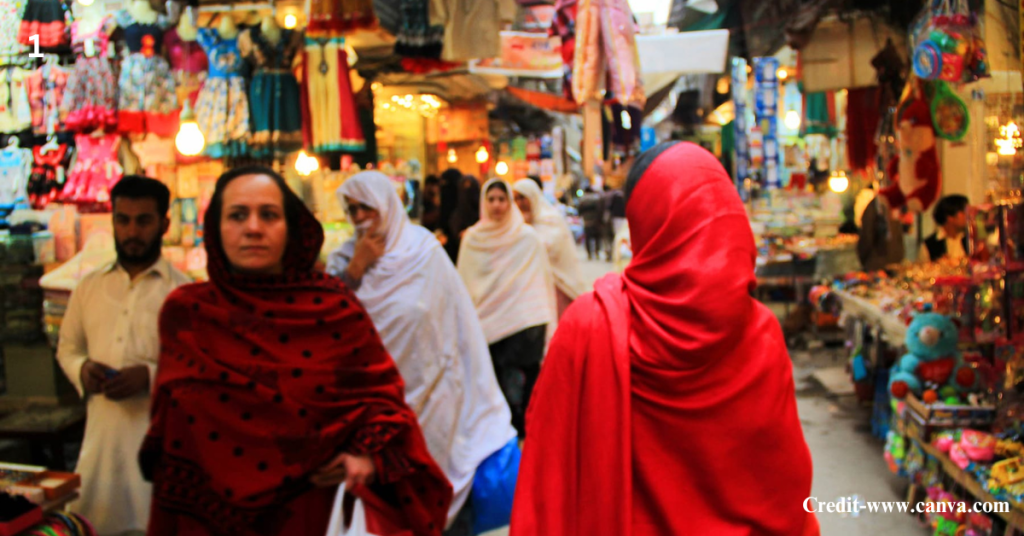
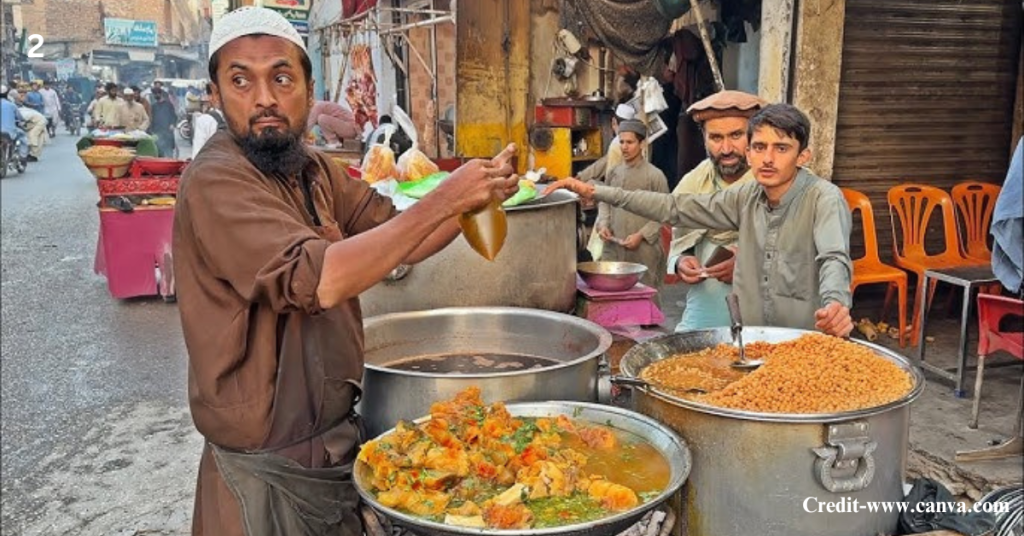
Bazaars and Food: Savoring Peshawar
Qissa Khwani Bazaar
People call it the “Market of Storytellers.” The place still rings with talk. Long ago, travelers sat on benches and told stories while they drank green tea. Now the same sound comes from tea houses, piles of spice and shops that sell gold. When you walk through, the city’s tales move around you.
What to Eat
Food is the heart of daily life in Peshawar. Taste the following dishes.
- Chapli Kebab – A thin patty of ground meat, heavily spiced, fried until the edges turn crisp while the inside stays juicy.
- Mutton Karahi – Tender cubes of goat or sheep simmered in a thick tomato sauce – scoop it up with naan.
- Kabuli Pulao – Rice steamed with carrot strips, raisins and lumps of lamb – the aroma drifts from the pot.
- Kahwa – Green tea boiled with cardamom, poured after the meal.
- Jalebi – Batter forced through a nozzle, fried until golden – soaked in sugar syrup – eat it for a quick sweet.
Where to Eat
Skip the expensive restaurants. The tastiest food is sold at the roadside stands and tiny cafés where the same people show up every day. In Namak Mandi, vendors grill lamb plus beef over open flames. In Qissa Khwani Bazaar, trays of nut filled sweets and hot snacks sit on every corner. If a row of grandfathers eats in one spot, sit there – the food will be fresh but also cheap.
Market Tips
When the seller names a price, offer about six tenths of that number and work up slowly.
Ask a passer by, “What do you like to eat?” as well as you will be led to a stall you would never find alone.
Step into the smallest tea shop – the man who pours the tea will talk to you and the other customers will do the same.
Getting Around and Staying Safe
Peshawar has one airport, Bacha Khan International. Phone apps and rickshaws wait outside the terminal plus take people to any part of town. For travel beyond the city, buses and shared vans leave from several stands but also reach nearby towns at low cost.
Accommodation
Hayatabad – The streets are wide, the houses are new and the area stays quiet at night – families prefer it.
Walled City – Life is loud, shops stay open late as well as historic sites sit within walking distance – noise continues until after midnight.
Safety Tips
Read the latest government travel warning the day before departure.
Ask a hotel worker or a shopkeeper which streets are safe after dark – follow the advice.
Stay away from street rallies and from packed bazaars where people push from every side.
Best Time to Visit
From November to March, brings cool air or clear skies.
Summer daytime heat is strong and the July – August monsoon pours sheets of rain. In winter, dust also smoke hang in the air – anyone with asthma or allergies should wear a mask and carry medicine.
Culture and Everyday Life
Pashto is the main language, but people also speak Urdu. If you say even a short sentence in Pashto, local people smile. Try “Sta so khair raghley,” which means “Welcome.”
Hospitality is at the heart of Peshawar. You enter a shop to look around and the owner hands you tea. Metalworkers and weavers still work at trades their grandfathers taught them. Buildings such as Islamia College show that the city respects learning plus culture.
Local Secrets
- The freshest chapli kebabs appear in the morning.
- Tea shops near small mosques or bookshops often have the friendliest owners.
- Small hotels near the railway station can hold luggage for a few hours.
- Heritage conservation is slowly restoring old buildings while the city grows.
- Air pollution is a concern in winter—carry a mask and drink filtered water.
Suggested 2-Day Itinerary
Day 1 – History and Old Streets
- Morning at Bala Hisar Fort
- Explore Gandhara art at Peshawar Museum
- Lunch and wandering in Qissa Khwani Bazaar
- Visit Sethi Houses and Gor Khatri
- Evening tea at a local café
Day 2 – Food and Modern Corners
- Chapli kebab breakfast
- Visit Mahabat Khan Mosque
- Quick drive to the Khyber Pass gate
- Evening in Hayatabad for parks and local dining
Longer stays? Check out
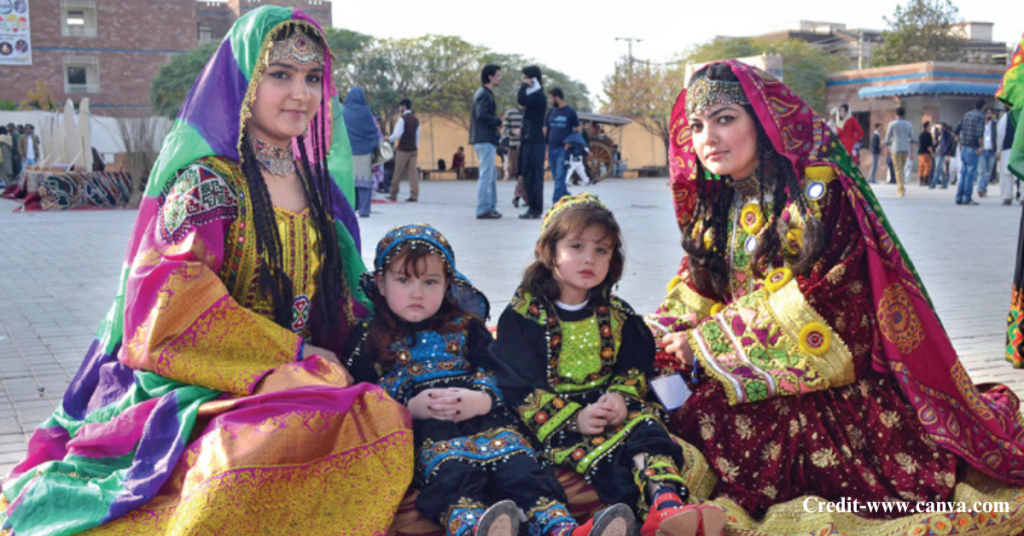
Final Thoughts
Peshawar refuses to be hurried. The city tells its tale only when it chooses and only in fragments – a stallholder’s price, the steam above a glass of green tea, the pattern cut into an old cedar door or the memory a passer by shares if you greet him and wait. Keep your voice low, put one question after another plus let the place open at its own slow pace.
It is ancient, crowded, friendly and full of life. Walk in with an open heart plus it will give you memories that stay with you long after you go.

